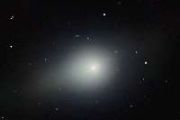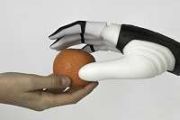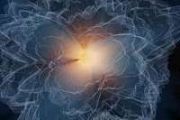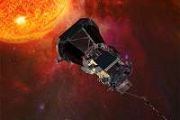
Copernical Team
China prepares next crewed flight to Tiangong station
 Preparations are nearly complete for the launch of China's upcoming crewed spaceflight, Shenzhou XX, which will ferry three astronauts to the Tiangong space station. The China Manned Space Agency confirmed that both the spacecraft and its Long March 2F rocket were rolled out to the launch tower at the Jiuquan Satellite Launch Center in the Gobi Desert on Wednesday night.
The agency reporte
Preparations are nearly complete for the launch of China's upcoming crewed spaceflight, Shenzhou XX, which will ferry three astronauts to the Tiangong space station. The China Manned Space Agency confirmed that both the spacecraft and its Long March 2F rocket were rolled out to the launch tower at the Jiuquan Satellite Launch Center in the Gobi Desert on Wednesday night.
The agency reporte SpaceX launches Bandwagon-3 mission, European re-entry capsule
 SpaceX launched its Bandwagon-3 mission into orbit Monday night from Cape Canaveral Space Force Station in Florida, with more satellites on board and a re-entry capsule that will become a first for Europe.
The Bandwagon-3 mission, atop a Falcon 9 rocket, lifted off at 8:48 p.m. EDT, from Space Launch Complex 40.
"Liftoff!" SpaceX wrote in a post on X one minute after the launch.
SpaceX launched its Bandwagon-3 mission into orbit Monday night from Cape Canaveral Space Force Station in Florida, with more satellites on board and a re-entry capsule that will become a first for Europe.
The Bandwagon-3 mission, atop a Falcon 9 rocket, lifted off at 8:48 p.m. EDT, from Space Launch Complex 40.
"Liftoff!" SpaceX wrote in a post on X one minute after the launch. Cosmic radio tuning may reveal dark matter within 15 years
 Researchers from King's College London, Harvard University, and UC Berkeley have introduced a new approach to dark matter detection that they believe could yield results within 15 years. The proposed method involves a device they liken to a "cosmic car radio," capable of detecting hypothetical particles known as axions, widely considered among the most promising dark matter candidates.
Dar
Researchers from King's College London, Harvard University, and UC Berkeley have introduced a new approach to dark matter detection that they believe could yield results within 15 years. The proposed method involves a device they liken to a "cosmic car radio," capable of detecting hypothetical particles known as axions, widely considered among the most promising dark matter candidates.
Dar The most ancient Milky Way-like galaxy yet observed
 An international research collaboration led by the University of Geneva (UNIGE) has identified the most remote spiral galaxy candidate ever recorded. Existing just one billion years after the Big Bang, this immense galactic system already displays a well-developed structure including a central bulge of aged stars, an expansive star-forming disk, and pronounced spiral arms. The findings, based on
An international research collaboration led by the University of Geneva (UNIGE) has identified the most remote spiral galaxy candidate ever recorded. Existing just one billion years after the Big Bang, this immense galactic system already displays a well-developed structure including a central bulge of aged stars, an expansive star-forming disk, and pronounced spiral arms. The findings, based on Cosmic rotation may help resolve universe expansion mystery
 A bold new theory from astrophysicists at the University of Hawaii Institute for Astronomy suggests the universe itself may be rotating-albeit at a nearly imperceptible pace. The study, led by Istvan Szapudi and published in the Monthly Notices of the Royal Astronomical Society, could offer a fresh explanation for the longstanding "Hubble tension" that has puzzled scientists for years.
Cur
A bold new theory from astrophysicists at the University of Hawaii Institute for Astronomy suggests the universe itself may be rotating-albeit at a nearly imperceptible pace. The study, led by Istvan Szapudi and published in the Monthly Notices of the Royal Astronomical Society, could offer a fresh explanation for the longstanding "Hubble tension" that has puzzled scientists for years.
Cur The eukaryotic leap as a shift in life's genetic algorithm
 A collaborative effort between researchers from Mainz, Valencia, Madrid, and Zurich has revealed new insights into one of biology's greatest leaps in complexity: the emergence of the eukaryotic cell. Published in PNAS, the study reframes eukaryogenesis as a phase transition in the evolutionary algorithm of life-a transition so profound it divides the biological record into two distinct computati
A collaborative effort between researchers from Mainz, Valencia, Madrid, and Zurich has revealed new insights into one of biology's greatest leaps in complexity: the emergence of the eukaryotic cell. Published in PNAS, the study reframes eukaryogenesis as a phase transition in the evolutionary algorithm of life-a transition so profound it divides the biological record into two distinct computati ISRO embarks on Ax-4 mission to advance deep space science and sustainability
 India's space agency, ISRO, has launched a suite of groundbreaking experiments aboard Axiom Mission 4 (Ax-4), in close partnership with NASA and the European Space Agency (ESA). These projects aim to deepen our understanding of life and technology in microgravity, laying vital groundwork for future long-duration missions and bolstering India's leadership in the global space sector.
Among I
India's space agency, ISRO, has launched a suite of groundbreaking experiments aboard Axiom Mission 4 (Ax-4), in close partnership with NASA and the European Space Agency (ESA). These projects aim to deepen our understanding of life and technology in microgravity, laying vital groundwork for future long-duration missions and bolstering India's leadership in the global space sector.
Among I NASA, SpaceX launch 32nd resupply mission to International Space Station
 NASA launched its latest cargo run to the International Space Station early Monday morning.
At 4:15 a.m. EDT, a SpaceX Dragon spacecraft took off while aboard a SpaceX Falcon 9 rocket from Launch Complex 39A at NASA's Kennedy Space Center in Florida. The craft, known as Commercial Resupply Services 32, or CRS-32, carried approximately 6,700 pounds of cargo and scientific equipment in wh
NASA launched its latest cargo run to the International Space Station early Monday morning.
At 4:15 a.m. EDT, a SpaceX Dragon spacecraft took off while aboard a SpaceX Falcon 9 rocket from Launch Complex 39A at NASA's Kennedy Space Center in Florida. The craft, known as Commercial Resupply Services 32, or CRS-32, carried approximately 6,700 pounds of cargo and scientific equipment in wh Ever wonder why some meteor showers are so unpredictable
 A newly published study by SETI Institute researchers suggests that the irregularity of certain meteor showers arises not from chaotic planetary influences but from the subtle, yet consequential, motion of the Sun itself. The findings, presented in the journal Icarus, offer a fresh perspective on the long-term behavior of comets and their meteoroid trails.
"Contrary to popular conception,
A newly published study by SETI Institute researchers suggests that the irregularity of certain meteor showers arises not from chaotic planetary influences but from the subtle, yet consequential, motion of the Sun itself. The findings, presented in the journal Icarus, offer a fresh perspective on the long-term behavior of comets and their meteoroid trails.
"Contrary to popular conception, Crystal record reveals ancient wet phases on Mars
 A research team led by Queensland University of Technology (QUT) has revealed new insights into Mars' geological and hydrological past by analyzing crystal structures in minerals identified by NASA's Perseverance rover. Their findings provide strong evidence for repeated episodes of mineral formation under varying environmental conditions just beneath the Martian surface.
The study, led by
A research team led by Queensland University of Technology (QUT) has revealed new insights into Mars' geological and hydrological past by analyzing crystal structures in minerals identified by NASA's Perseverance rover. Their findings provide strong evidence for repeated episodes of mineral formation under varying environmental conditions just beneath the Martian surface.
The study, led by 






























